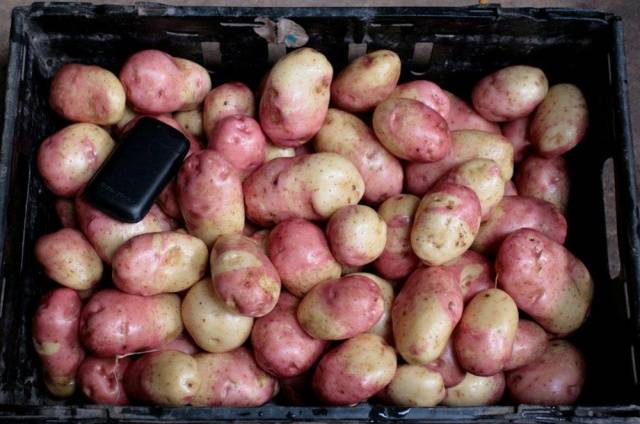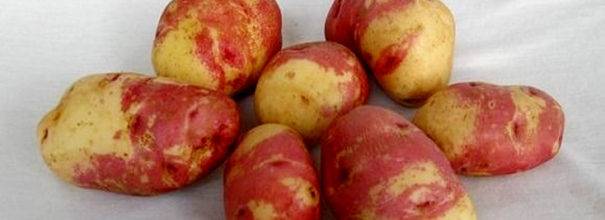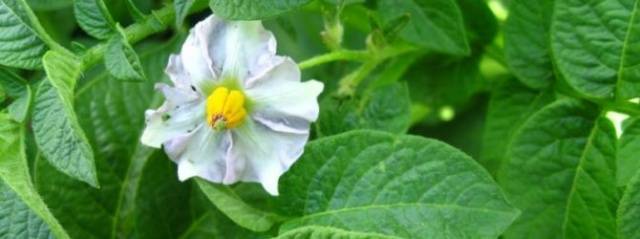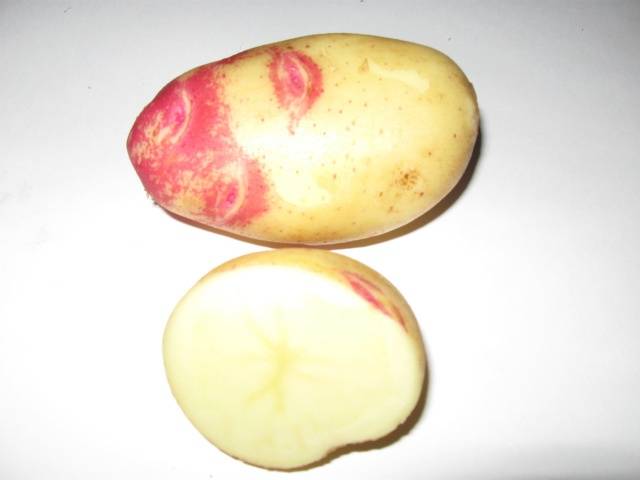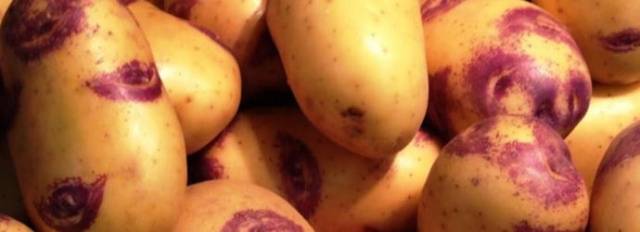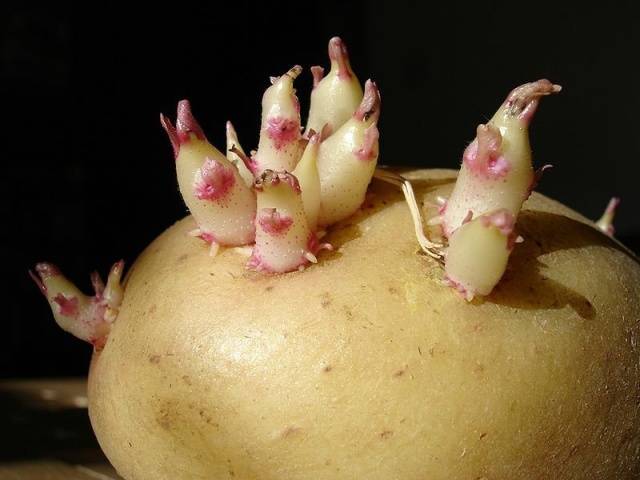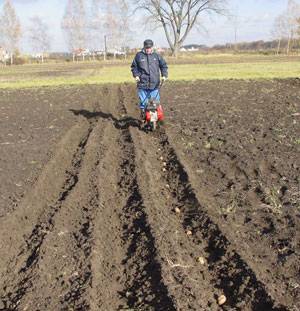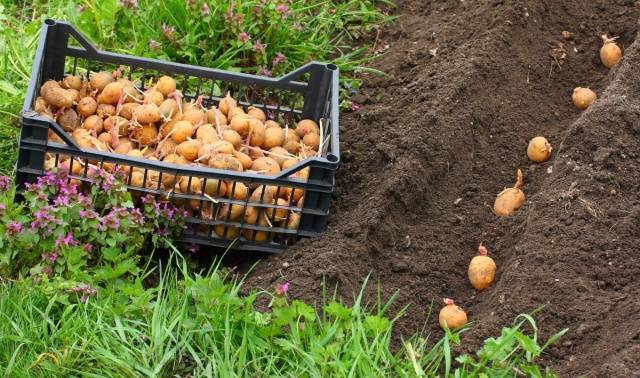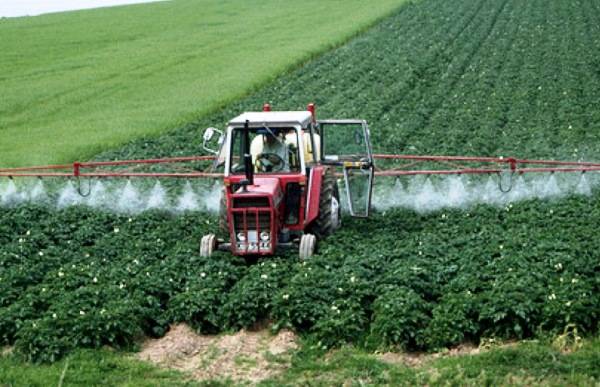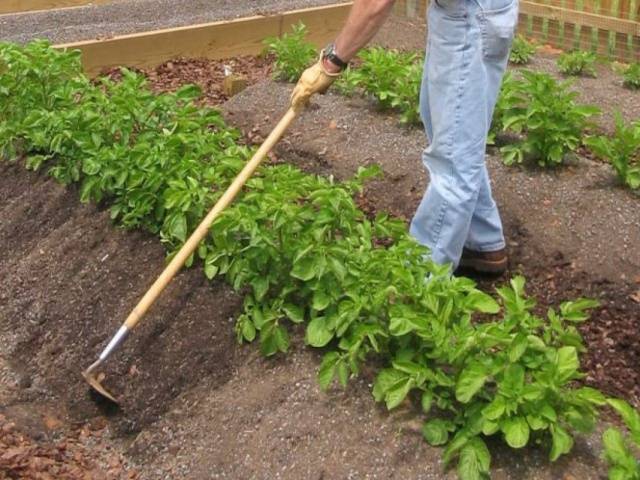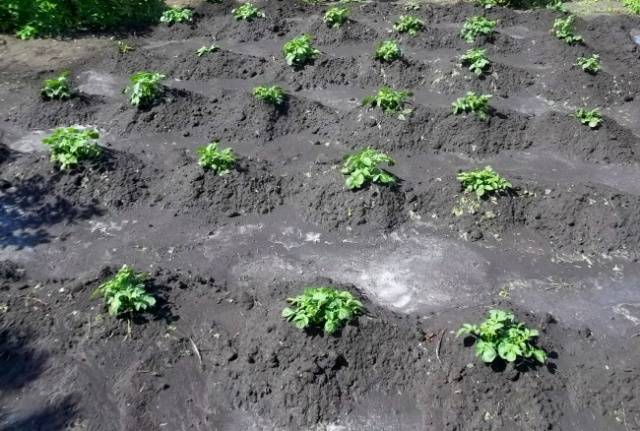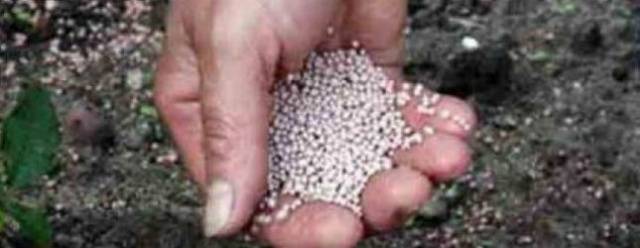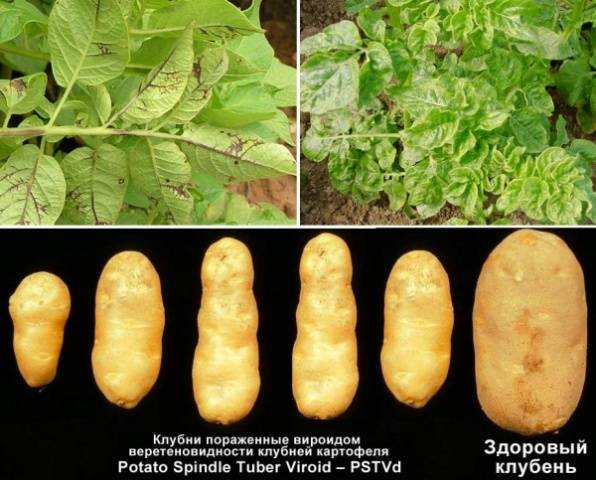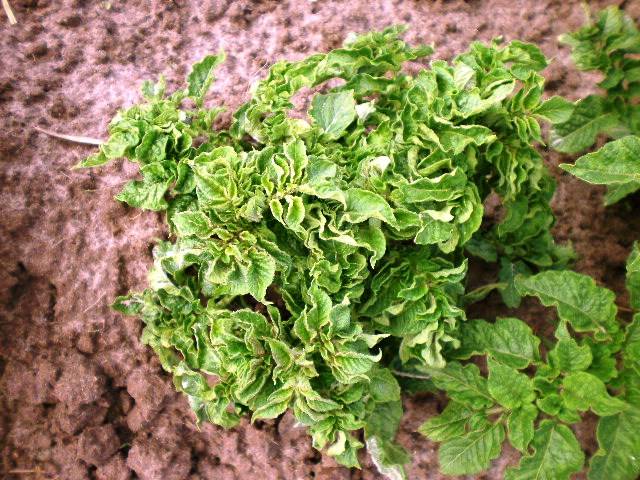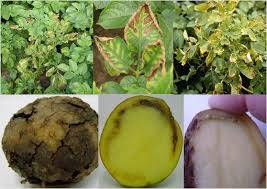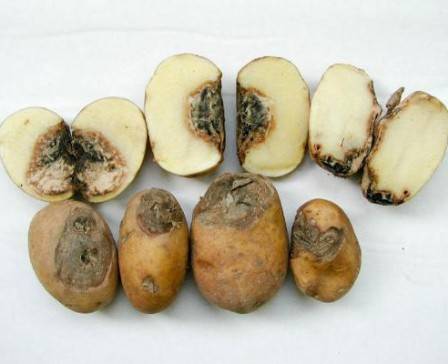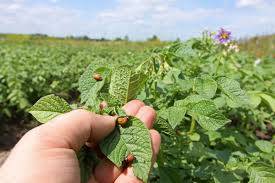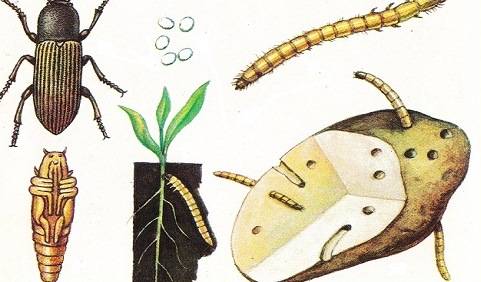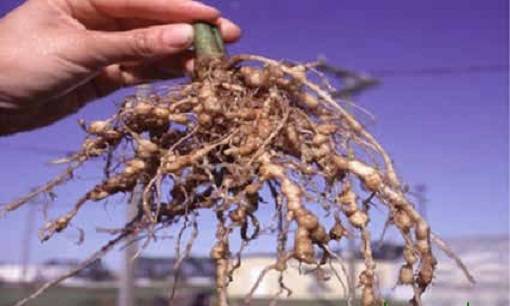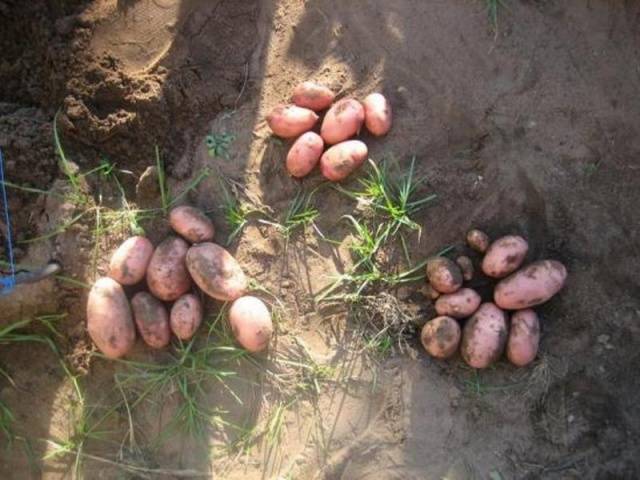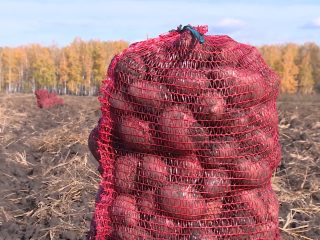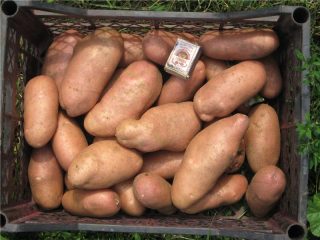Content
Potatoes are the second bread. To get a decent harvest, you need to pick a good variety. One of them is late-ripening Ivan da Marya.
Origin story
Holland is famous for its potato cultivation technology and its excellent varieties. From this country, they are exported all over the world. So once upon a time it came to us Picasso variety... It was created by AGRICO U.A. Outwardly, the tubers resemble the artist's palette: an unusual combination of light crimson and yellowish colors on each of them gives them originality. Since 1995, the time when it was included in the State Register of Breeding Achievements, potatoes have been cultivated in the central region of Russia. Over 20 years of traditional breeding and selection gave rise to local clones. This is how the Ivan da Marya potato appeared. The unusual appearance gave rise to many names: Little Red Riding Hood, Gorbachevka, Matryoshka. Here he is in the photo.
Description and characteristics
Ivan da Marya potatoes ripen at a later date. For the full growing cycle of this variety, it takes from 110 to 130 days, depending on the weather. Tuber formation in Ivan da Marya is high: each bush can produce up to twenty tubers with an average weight of about 120 grams. The high marketability of the obtained crop is also pleasing - more than 90%. Ivan da Marya potatoes are suitable for growing in the Central Black Earth and Central regions. In each of them, the yield is different. If in the Central region it is possible to collect up to 320 kg from one hundred square meters, then in the Central Black Earth region - only 190 kilograms from the same area.
Potatoes are not too starchy. Depending on the growing conditions, the starch content in the tubers ranges from 7.9% to 13.5%. Therefore, the taste can be satisfactory or good. But Ivan and Marya's tubers are stored well. About 90% of the harvested crop will last until spring without damage.
The bush of the potato Ivan da Marya is tall with straight stems, well leafy. It blooms with white flowers with a cream shade, which quickly fall off without forming berries.
The tubers of the Ivan da Marya potatoes are notable for their multi-colored color. Pink spots and small eyes of the same color stand out brightly against a yellow background. The inside of the flesh is creamy.
Many seed farms in Russia have mastered the production of seed tubers of this Dutchman. It can be bought at ZAO Oktyabrskoye in the Leningrad Region, in OOO Meristemnye Kultury in the Stavropol Territory, in the Elite Potato agrofirm and in the V.I. Lorkha.
Advantages and disadvantages
Like any other variety, Ivan da Marya has its advantages and disadvantages. They can be summarized in a table.
| Dignity | disadvantages |
| High yield, large tubers | Loses varietal characteristics quickly |
| Good taste | Medium resistance to leaf curling and late blight |
| Universal application | Scab defeat |
| High marketability | Weakly resistant to late blight |
| Good keeping quality | |
| Cancer and potato nematode resistance | |
| Weak formation of berries - all the forces of the bush are directed to the formation of the crop |
Landing
Only properly planted potatoes will give a full harvest. There are many different planting methods. Let's dwell on the traditional. The tubers must be germinated before planting potatoes.
Germination
It will take about a month for the Ivan da Marya potato tubers to form strong sprouts. Germination conditions:
- we lay out the tubers in one or two layers in the light;
- for about 10 days we maintain the temperature at about 20 degrees, during which time the sleeping eyes will wake up;
- for the remaining 20 days, we maintain the temperature no higher than 15 degrees;
- during this time, the tubers need to be turned over several times so that they form sprouts evenly.
More information about sprouting potatoes can be seen in the video:
Landing dates
This is a very important point. Planted potatoes too early will chill and germinate for a long time, and may completely rot. If you are late with landing, the earth will dry out, it simply will not have enough moisture. All this will significantly reduce the yield. Our ancestors also began to plant potatoes when the bare feet were not cold on the ground. If we translate this rule into modern language, the temperature of the soil at a depth of half the bayonet of a shovel should be about 10 degrees Celsius. Usually this moment coincides with the appearance of leaves on a birch and the beginning of flowering of bird cherry.
Landing rules
It would seem that everything is simple: put the potatoes in the hole and covered them with earth. But there are some subtleties here:
- the distance between the rows for late varieties, namely, Ivan da Marya potatoes belong to them, should be about 70 cm;
- the distance between tubers in a row is from 30 to 35 cm;
- for better illumination, the rows are arranged from north to south.
Tubers the size of a hen's egg are best suited for planting. You can plant smaller ones, but then more often. Planting holes are filled with humus or compost - about 1 liter, ash - about a tablespoon and a teaspoon of complex mineral fertilizer with microelements. Better if it is specially designed for potatoes.
The roots of the plant are located above the tuber. If you put food on the bottom of the hole, it will be difficult for growing potatoes to use it.
It remains to fill the holes with earth.
You can watch the video about the various methods of planting potatoes:
Care
To get a good harvest of potatoes, you have to work hard. Planting tubers and forgetting about it before harvesting will not work. In the best case, it will be possible to collect a handful of potatoes the size of a pea. All agrotechnical measures for the care of plants must be carried out on time and in full:
- weed and loosen, preferably after each rain or watering;
- water in dry weather. The potatoes Ivan da Marya are especially picky about moisture at the stage of tuberization.
- it will be necessary to carry out hilling and root and foliar feeding on time;
- it will be necessary to take care of the protection of Ivan da Marya potatoes from diseases and pests.
Hilling and feeding
Gardeners often argue about whether it is necessary to sprinkle potatoes. Traditional technology makes this operation mandatory.
Hilling
What are the advantages of hilling:
- The soil retains moisture better.
- Tubers are not exposed or greened.
- The air regime of the soil is improved.
- In hot weather, the soil does not overheat and the tubers are not baked in it.
- The overall harvest is increasing.
According to the classical technology, hilling is carried out two times: the first - when the sprouts reach a height of about 14 cm, the second - after two to three weeks, this usually coincides with the flowering of potatoes.
In those regions where return frosts are repeated with enviable consistency, you should not wait until the potatoes grow to the desired size. It is better to huddle the seedlings as soon as they appear: this will protect them from freezing.
Often, one more hilling may be needed if young tubers are on the soil surface. When carrying out this procedure, it is important:
- do it early in the morning or late afternoon;
- after rain or watering.
It is necessary to carry out hilling very carefully, shoveling the soil from the rows.
Top dressing
Potatoes carry a lot of nutrients out of the soil. To make the harvest happy, you will need 3 root dressings.
- A month after planting, 10 g of urea and potassium sulfate and 20 g of superphosphate are dissolved in a bucket of water. This amount is enough to feed one square meter of plantings. You can apply dry fertilizer in the aisles, but then good watering is required. Even at the first stage of growth, it is impossible to overdo it with nitrogen fertilizers, the tops will be very good, and little tubers are formed.
- The second feeding is carried out in the budding phase.
- The third - at the end of flowering.
Foliar dressing will also be required. If the development of plants is slow, they can be fed with a weak solution of urea - 10 g per bucket. During budding, it will be useful to sprinkle with a solution of a complete mineral fertilizer with trace elements - 15 g per bucket.
So that there are no voids in the large tubers of Ivan-da-Marya potatoes, and the taste improves, during tuberization, foliar dressing is carried out with a solution of Mag-Bor fertilizer - a tablespoon per bucket of water.
A very good effect during the ripening of tubers is given by foliar feeding with phosphorus. For her, you need to dissolve 20 grams of superphosphate in 10 liters of water. You need to insist the solution for two days, not forgetting to stir. For spraying, a liter of solution per hundred square meters is enough.
Diseases and pests
Viral and fungal diseases bring the most harm to potatoes.
Viral diseases
There are many viruses infecting potatoes. They can significantly reduce the yield, depending on the pathogen - from 10 to 80% of potatoes are lost. When planting seed-derived potatoes - super super elite and super elite, they are virus free. Infection occurs with the help of pests. Over time, viruses accumulate, and the so-called degeneration of the potato occurs.
Virus infection is indicated by various specks, stripes or wrinkling of the leaves. There is no means to fight viruses on potatoes. It is necessary to carry out biological cleaning by examining the bushes. All suspicious ones dig up, and the tops are burned.
Fungal diseases
All gardeners know about late blight and are diligently fighting it by processing tomatoes. But potatoes need processing no less, since the outbreak of the disease begins with it. It can affect all parts of the plant, manifesting itself as vague, weeping spots on the leaves, from the inside of which a white bloom of spores is visible. Brown, hard spots appear on the tubers. Potatoes Ivan da Marya are not resistant to late blight. Therefore, mandatory treatment with copper-containing drugs or phytosporin is required. They start from the moment of budding and finish no later than 10 days before harvesting. The total number of treatments is up to 5.
A dangerous disease is potato cancer. The fungus that causes it can live in soil for up to 20 years.
Potatoes may be affected by phomosis, black and ordinary scab, ring rot. To prevent them, it is necessary to observe crop rotation, do not apply fresh manure, keep the plantings clean from weeds and spud plants on time.
Pests
There are many people who want to eat potatoes.
- Most of all, the Colorado potato beetle annoys potatoes. Its larvae can completely eat all the leaves, leaving the gardener without a crop. They are fought with the help of chemical methods and folk remedies. You can collect pests by hand. Do not take ants out of the garden; Colorado beetles do not live near the anthill.
- They damage tubers and wireworms - the larvae of the click beetle. The drug Prestige is used against them. Repeated loosening of the soil, as well as its liming, also helps.
- Nematodes, of which the golden one is the most harmful, can reduce the yield by 80%. They are considered quarantine pests, it is very difficult to fight them. The easiest way to plant nematode-resistant varieties, and Ivan da Marya potatoes are highly resistant to this pest.
Harvesting
Ivan da Marya potatoes are ready for harvest 4 months after planting. At the end of summer, there is a high probability of damage to plants by late blight. Experienced gardeners advise to mow the tops 2 weeks before digging the potatoes. What it gives:
- The likelihood of damage to tubers by late blight decreases.
- They ripen in the ground.
- The skin is denser and less damaged during harvesting.
- These potatoes will keep better.
If there is a need to select some of the harvested tubers for planting next year, they need to be harvested in the field. For this, potatoes from each bush are stacked next to the dug hole. It should dry out a little: on a sunny day - no longer than 2 hours, and cloudy - about 4.
During this time, the required number of tubers is selected, observing the following conditions:
- the shape and color of the tubers must fully match the variety;
- they need to be selected only from bushes with at least 15 potatoes;
- tuber size - about a chicken egg.
Immediately after digging, potatoes are not stored for storage. He should lie in piles in a shed or any other suitable room for at least 2 weeks. After that, the tubers are sorted out and sent for long-term storage.
Conclusion
Among the many varieties of potatoes, Ivan da Marya is distinguished by its attractive appearance, good taste and preservation during storage. Subject to all the rules of agricultural technology, he will delight the gardener with an excellent harvest of large tubers.
